Experimental and Numerical Investigation of Spontaneous Imbibition in Multilayered Porous Systems
阿卜杜拉国王科技大学
自发渗吸是多相流在多孔介质中的各种应用中发挥重要作用的基本流体流动机制,其中包括地下油田的油气开采和二氧化碳的地下封存。了解在多层系统中由毛管力驱动的渗吸动力学对于设计和优化现场应用至关重要。
传统的Amott单元是常用的用于测量毛细驱动效果的实验室实验方法。该方法通常通过将含油的岩心插入水中,并测量提取的油量来进行。然而,这种方法无法完全复制实际油藏条件下的情况。在油藏条件下,渗吸现象发生在不同岩石类型的多孔地层内部。然而,在Amott单元中,渗吸发生在岩石与开放环境水介质之间。这种对于现场条件的偏差可能导致无法准确反映渗吸的真实潜力。
为了解决这个问题,本研究提出了一种使用微CT和动态孔隙尺度成像的方法,作为一种可视化和量化不同岩石之间浸润的替代方案。传统方法无法实现这种效果。该研究的目的是引入评估不同多孔地层中渗吸机制的新概念,以更准确地反映地下多层系统的条件。
Abstract
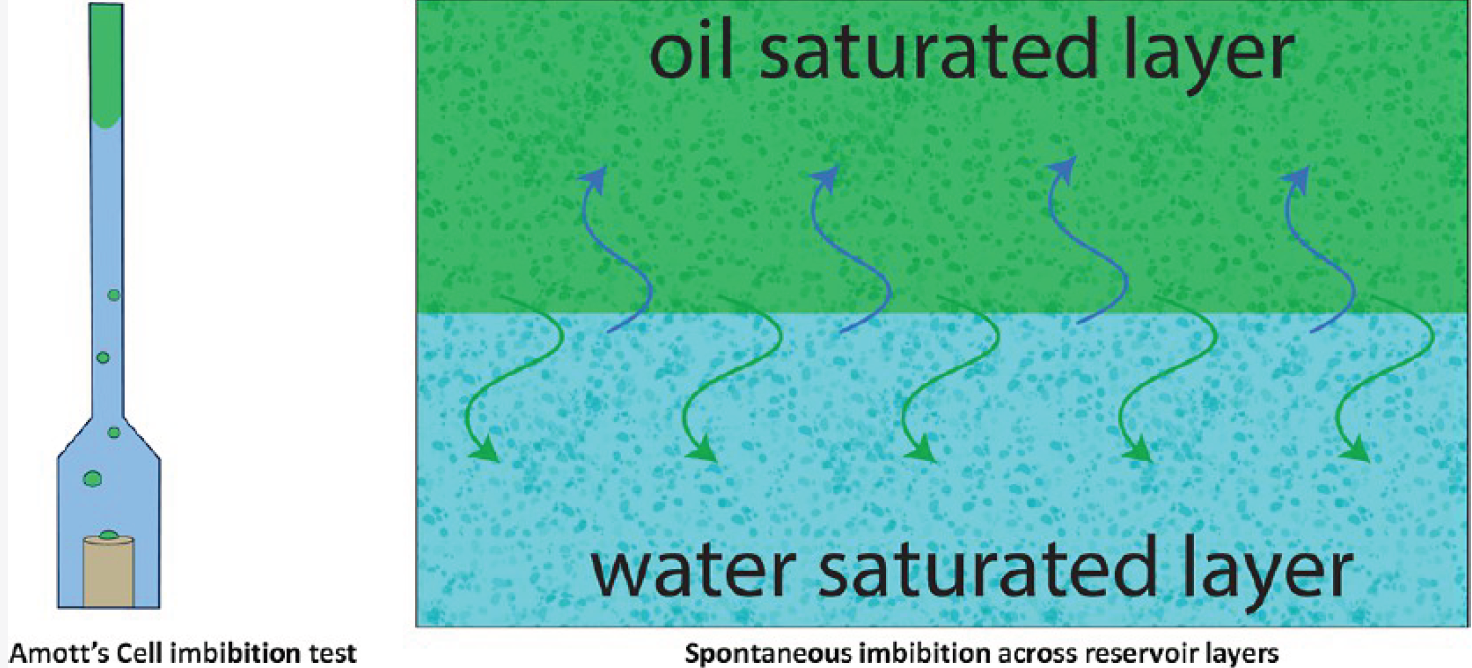
Spontaneous imbibition is a fundamental fluid flow mechanism that plays a significant role in various applications of multiphase fluid flow in porous media, including oil extraction from subsurface reservoirs and underground carbon dioxide storage. Understanding the dynamics of imbibition, driven by capillary forces across multilayered systems, is essential for designing and optimizing field applications. Laboratory experiments with the traditional Amott cell, commonly used to quantify the imbibition performance by immersing an oil-saturated core plug in water and measuring the extracted oil, do not fully replicate actual reservoir conditions. Under reservoir conditions, imbibition occurs within the porous formations across different rock types, while in the Amott cell, imbibition occurs between the rock and the open surrounding water medium. This misrepresentation of field conditions may not replicate the true potential of imbibition. In this study, we use micro-CT and dynamic pore-scale imaging as an alternative approach to visualize and quantify rock-to-rock imbibition within heterogeneous porous media, which cannot be achieved with traditional methods. This work aims at introducing a new concept to evaluate the imbibition mechanism across different porous formations, reflecting the conditions of multilayer systems in the subsurface.
2.5. Darcy-Scale Simulations. To assess the capillary-induced saturation dynamics in the two layers, we conducted two-phase fluid flow simulations using CMG-IMEX using a 2D radial grid with 100 simulation cells in the Z-direction along the domain, as shown in Figure4. We then divided the computational domain (grid) into two zones, corresponding to layers 1 and 2. Layer 1 consists of the fine glass beads, initially saturated in oil (i.e., So = 1 in Layer 1), and layer 2 consists of the coarse glass beads, initially saturated in water saturation (i.e., SW = 1 in layer 2). Table 5 summarizes the input parameters for the Darcy-scale simulation.
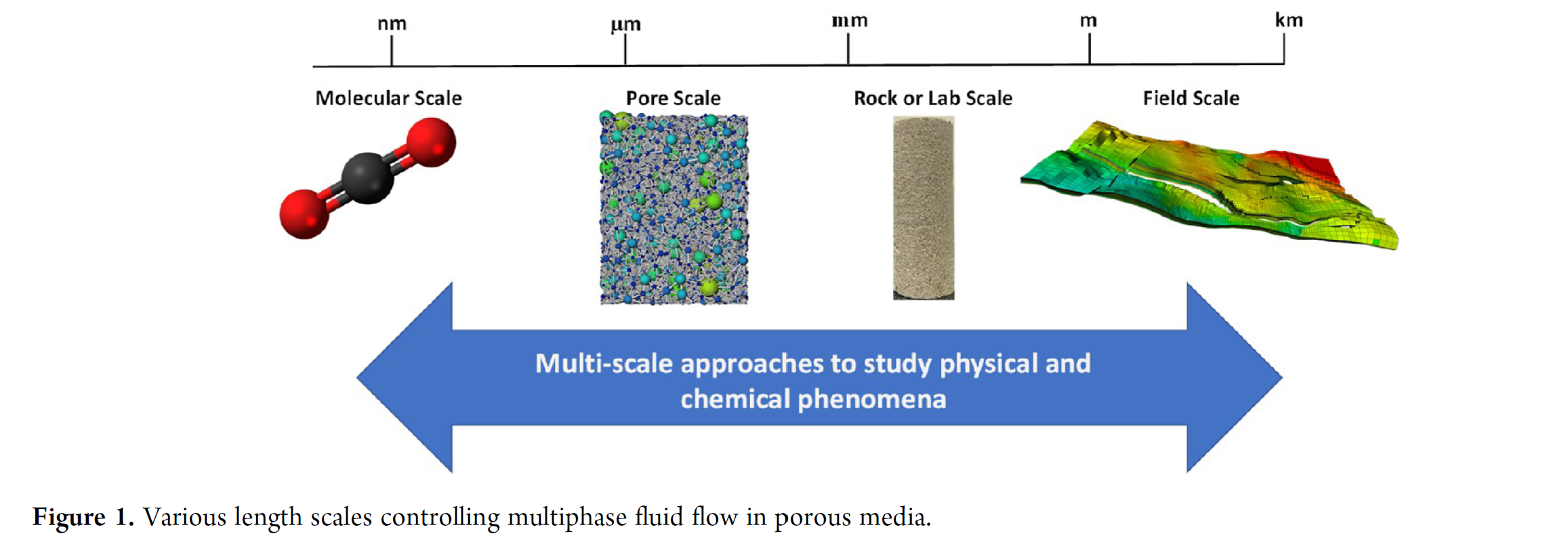
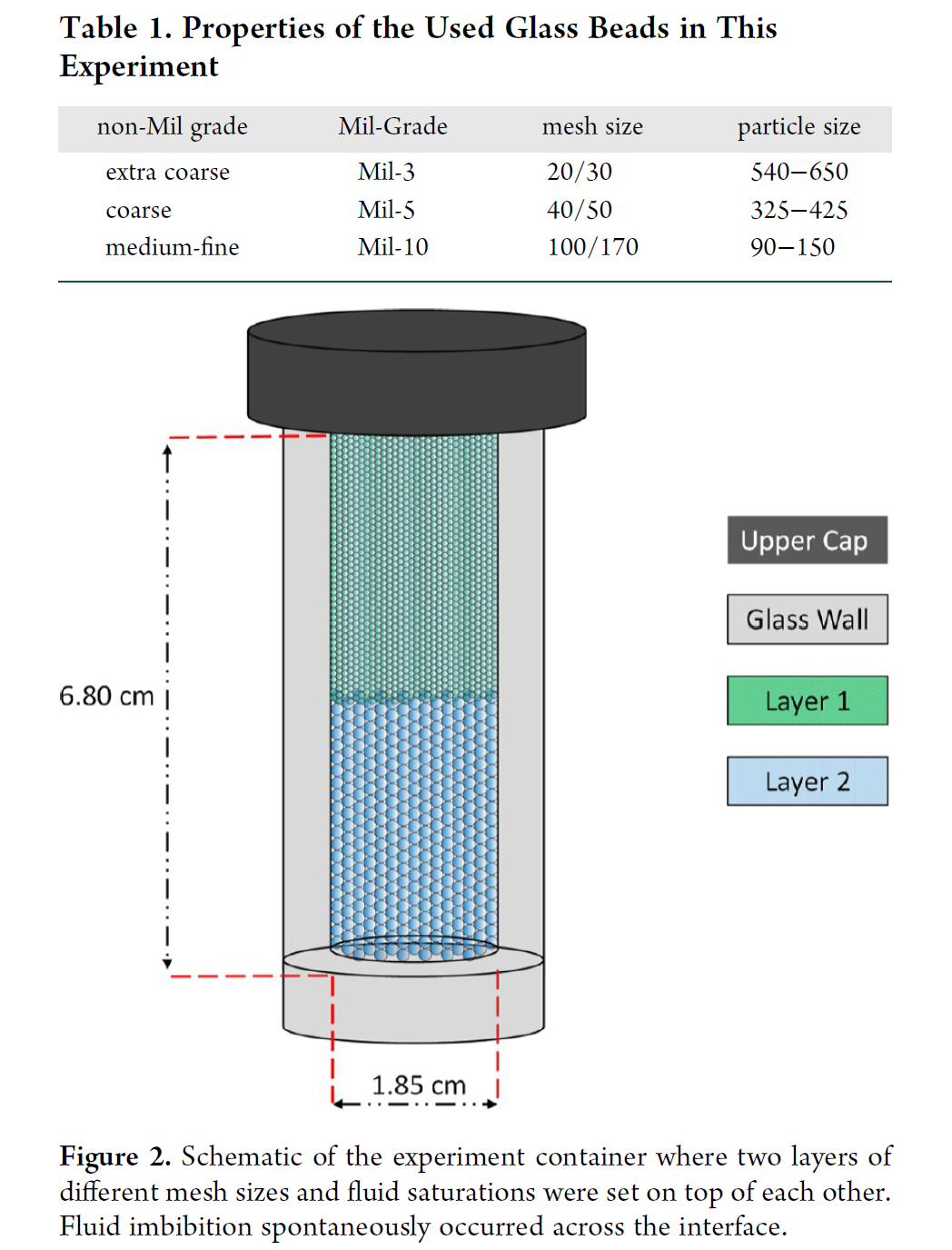
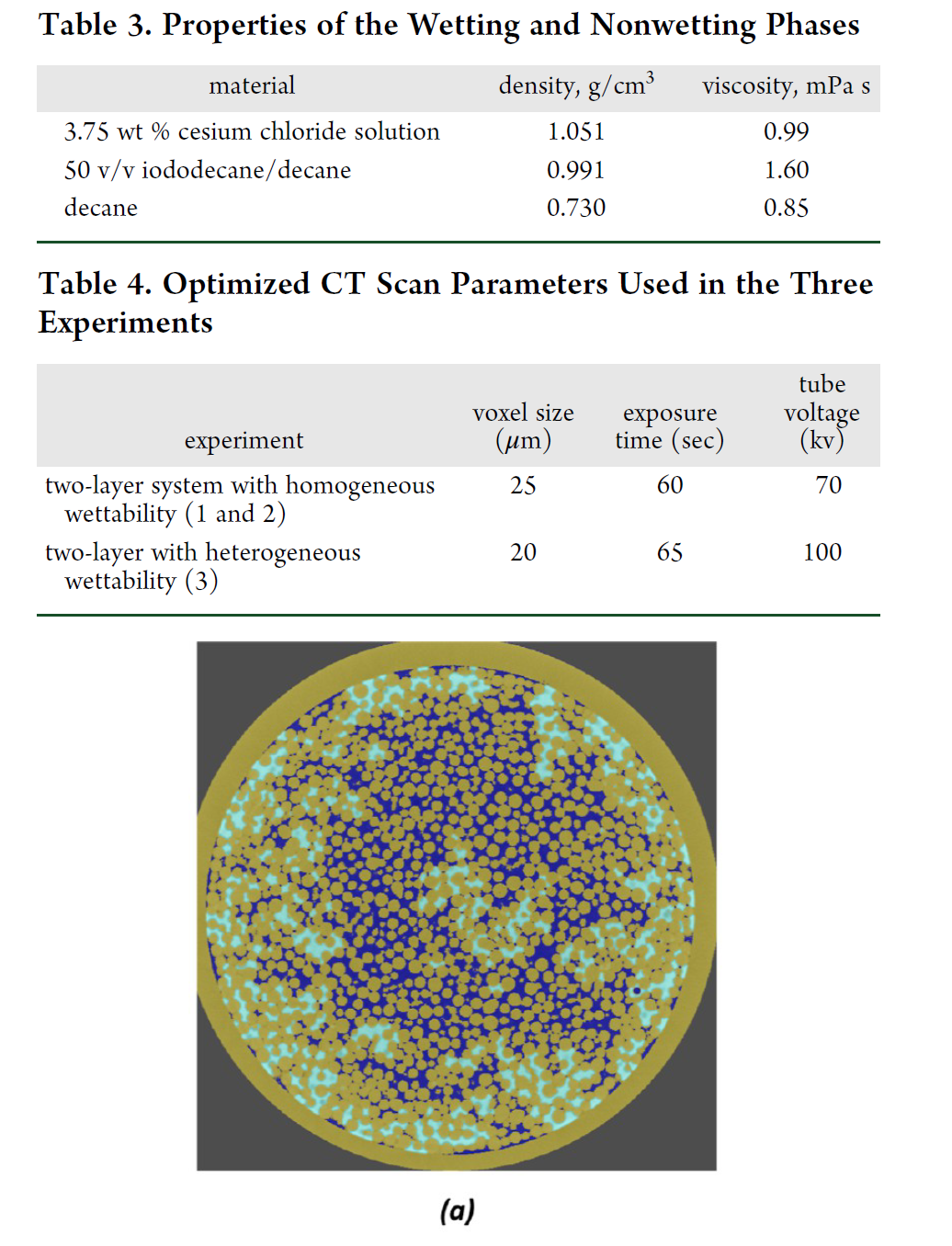

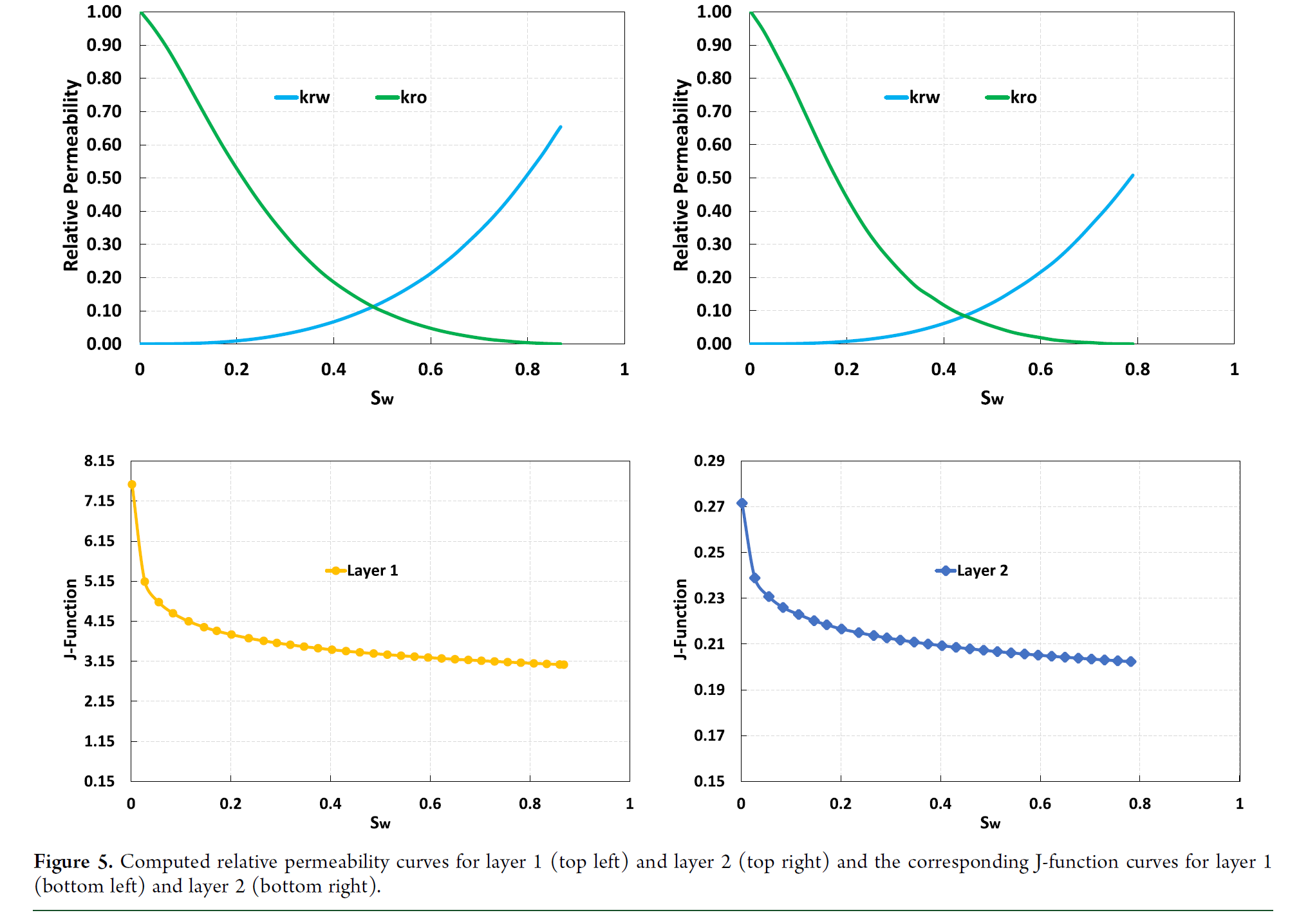


4. Conclusions
We introduced a new approach to investigate spontaneous imbibition within the porous media across layers. This approach is more representative than traditional methods that measure imbibition of the oil-saturated porous medium surrounded by water. The proposed experiments were successful in demonstrating spontaneous imbibition and crossflow between layers of various properties. Numerical simulations are then used to reproduce the experimental results.
The main findings are summarized as follows:
- CT scan is an effective technology for evaluating static and dynamic properties of porous media.
- The measured in situ contact angle from CT images provided a good match with the expected wettability of the fluid–solid systems, which was used to calculate the capillary pressure curves.
- PNM was used to estimate the oil–water capillary pressure and relative permeability curves of the porous media.
- Capillary forces between the two layers of glass beads exhibited spontaneous imbibition and redistribution of saturations, which could be observed and quantified.
- Spontaneous imbibition leads to the redistribution of fluids between layers of different capillarity until it reaches equilibrium. With this mechanism, oil flow occurred in the large pathways, while water flow occurred through the narrow pathways, reflecting counter-current flow.
- Simulations were conducted to replicate the experimental results, which showed good agreement between the experiment and the simulation model.
- The proposed approach could be extended to study imbibition across rock samples under reservoir pressure and temperature conditions. However, certain experimental challenges need to be considered. One such challenge is the possibility of introducing air when assembling the two pieces of core plugs together. Another challenge is related to the roughness of the ends of the rocks, which plays a crucial role in ensuring maximum contact between the two rocks. It is important to note that the presence of a gap between the two rocks minimizes the crossflow process between the two rocks.
- While one of this study’s primary objective is to investigate the role of spontaneous imbibition as a driving mechanism of crossflow in layered formations, the effect of negative part of capillary pressure in oil–wet systems is also important. The results from coreflooding may be different than spontaneous imbibition, as highlighted in a study by Tang and Firoozabadi.
